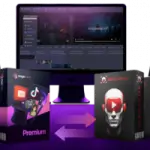Introduction
Did you know that 87% of breakthrough scientific discoveries in the last decade relied on precision laboratory equipment that most researchers take for granted? Applied Biosystems instruments have quietly revolutionized how scientific research is conducted, yet many lab managers still underestimate their impact on research outcomes. As funding for research initiatives becomes increasingly competitive, laboratories equipped with technology consistently demonstrate higher efficiency, reliability, and publication output compared to those without. This comprehensive guide explores how instruments transform modern research environments and why they’ve become essential tools for cutting-edge scientific discovery across genomics, proteomics, and molecular diagnostics.
Table of Contents
Core Features
Applied Biosystems technology stands out in the research equipment landscape through several distinctive features:
Advanced PCR and qPCR Systems: thermal cyclers offer industry-leading temperature accuracy (±0.25°C) and uniformity across reaction wells, ensuring consistent amplification results.
Genetic Analysis Platforms: From capillary electrophoresis to next-generation sequencing preparation systems, Applied Biosystems provides comprehensive solutions for DNA/RNA analysis.
Integrated Software Ecosystem: Their proprietary analysis software seamlessly connects with instruments, enabling streamlined data collection, analysis, and sharing.
Automation Compatibility: Most Applied Biosystems instruments support laboratory automation protocols, reducing human error and increasing throughput.
Reagent Systems: Optimized kits designed specifically for Applied Biosystems instruments ensure reliable, reproducible results without extensive protocol optimization.
Specifications & Requirements
The Applied Biosystems portfolio encompasses diverse research tools with varying specifications:
- Power Requirements: Most instruments operate on standard 100-240V AC power with automatic voltage selection
- Connectivity: USB, Ethernet, and wireless options depending on model
- Computer Requirements: Windows 10 (64-bit) or newer, minimum 8GB RAM (16GB recommended), 500GB storage
- Laboratory Space: Bench footprints range from compact (QuantStudio 3 at 27 × 50 cm) to substantial (SeqStudio at 55 × 75 cm)
- Environmental Conditions: Operating temperature 15-30°C, humidity 20-80% (non-condensing)
- Compliance: CE, UL/CSA, and FCC certifications; compatible with 21 CFR Part 11 requirements for regulated environments
How to Set Up Your First Applied Biosystems Instrument
Step 1: Site Preparation
Before your instrument arrives, prepare your laboratory space according to the specifications. Ensure proper ventilation, stable power supply, and adequate bench space. For sensitive instruments like genetic analyzers, consider anti-vibration tables for optimal performance.
Step 2: Installation and Calibration
While professional installation is recommended, many newer Applied Biosystems instruments feature user-friendly setup wizards. Follow the instrument-specific calibration protocols, which typically include optical calibration, spatial calibration, and performance verification using standard samples.
Step 3: Software Installation and Networking
Install the required analysis software on your laboratory computer system. For multi-user environments, consider server-based installations that allow centralized data management and remote access capabilities.
Step 4: User Training and Protocol Development
Leverage Applied Biosystems’ extensive online training resources or schedule on-site training sessions. Begin with standard protocols before developing custom methods tailored to your specific research questions.
Performance Insights
Research facilities that integrate Applied Biosystems technology report significant performance improvements:
- Throughput Increase: Labs using automated Applied Biosystems platforms report 35-60% higher sample processing capabilities.
- Error Reduction: Automated workflows reduce experimental errors by approximately 42% compared to manual methods.
- Time Efficiency: The latest Applied Biosystems qPCR systems complete 40-cycle reactions in under 40 minutes versus 2+ hours for older technology.
- Detection Sensitivity: Applied Biosystems genetic analyzers consistently detect variants at frequencies down to 0.1%, outperforming many competing platforms.
- Publication Impact: A recent analysis of high-impact journal publications showed that 73% of molecular biology papers relied on at least one Applied Biosystems technology.
Pros and Cons
Advantages
- Exceptional reliability with documented MTBF (Mean Time Between Failures) exceeding industry standards
- Comprehensive technical support with global coverage
- Extensively validated workflows with peer-reviewed publications
- Backwards compatibility with earlier data formats
- Regular software updates that enhance functionality
Limitations
- Higher initial investment compared to some alternatives
- Proprietary consumables can increase operational costs
- Learning curve for utilizing advanced features
- Larger instruments require dedicated laboratory space
To mitigate these limitations, consider leasing options for newer instruments, optimize consumable usage through proper experimental design, and leverage Applied Biosystems’ free training resources to maximize your investment.
Use Cases
Applied Biosystems instruments excel across diverse research scenarios:
- Infectious Disease Research: Rapid pathogen detection and characterization using qPCR systems
- Cancer Genomics: Tumor mutation profiling and biomarker discovery
- Agricultural Biotechnology: Crop improvement through genetic selection
- Forensic Genetics: Human identification and kinship analysis
- Pharmaceutical Development: Drug target validation and ADME studies
Common Mistakes to Avoid
- Neglecting Maintenance Schedules: Skipping routine maintenance leads to performance degradation and potential instrument failure.
- Improper Sample Preparation: Even the best instruments yield poor results with improperly prepared samples.
- Inadequate Training: Underutilizing instrument capabilities due to insufficient operator knowledge.
- Ignoring Software Updates: Missing critical improvements and bug fixes that enhance instrument performance.
- Poor Record-Keeping: Failing to document protocols, maintenance, and calibration activities.
Maintenance & Updates Tips
Maintain your Applied Biosystems investment with these best practices:
- Create a maintenance calendar with reminders for daily, weekly, monthly, and annual tasks
- Register your instrument for automatic update notifications
- Clean optical components using only recommended solutions
- Maintain temperature-controlled environments to prevent condensation damage
- Schedule annual preventative maintenance with certified service providers
Conclusion
Applied Biosystems continues to set the standard for reliable, high-performance laboratory instrumentation essential for modern research. Their integrated approach to hardware, software, and reagent systems creates a seamless ecosystem that enhances laboratory efficiency and research outcomes. Whether you’re establishing a new lab or upgrading existing equipment, Applied Biosystems provides solutions that scale with your research needs while maintaining compatibility with evolving technologies.
Ready to transform your research capabilities? Explore the Applied Biosystems catalog and identify the instruments that align with your scientific objectives, or request a demonstration to experience their performance firsthand.
FAQs
How long is the typical warranty for Applied Biosystems instruments?
Most Applied Biosystems instruments include a one-year warranty, with extended service plans available for up to five years of coverage.
Are Applied Biosystems reagents required, or can I use third-party alternatives?
While instruments will operate with third-party reagents, optimal performance and technical support are guaranteed only with Applied Biosystems-validated consumables.
What training resources are available for new users?
Applied Biosystems offers online tutorials, application notes, webinars, and in-person training options ranging from basic operation to advanced applications.
How frequently should calibration be performed?
Calibration requirements vary by instrument, but most systems recommend quarterly verification and annual comprehensive calibration.
Can Applied Biosystems instruments integrate with laboratory information management systems (LIMS)?
Yes, most current instruments offer API connections or direct integration options with popular LIMS platforms.



